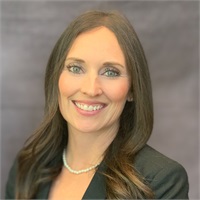As an employee of XYZ Tech Firm (our generic company), you can access many financial resources through your benefits package. One of the most significant perks is the 401(k) plan. If you know how to leverage this plan, it can have a significant positive impact on your retirement strategy. Here’s a breakdown of the basics:
- XYZs 401(k) works like any other 401(k) plan, allowing you to use part of your income for long-term investments and retirement.
- For the year 2022, If you are 50 years or younger, you can put up to $20,500 in your 401(k). After 50, you are eligible for a “catch-up” contribution of $6,500, for $27,000.
- XYZ, like many firms, may match 50% of every dollar you contribute up to the IRS deferral maximum.
- Your 401(k) contributions and XYZ matching contributions are considered fully vested right away (your plan may be different).
That should help you get started, but there is much more to learn about this topic. Read on for advice on getting the most out of your XYZ 401(k).
Maximize Matched Funds
One significant financial benefit of working at XYZ, is the matching funds they provide to employees investing in their 401(k). XYZ may offer a 50% match for every pre-tax or Roth dollar saved. This is free money, so you should take advantage of it to the largest amount. Note that XYZs match will always be a pre-tax contribution, regardless of whether you make pre-tax or Roth contributions as an employee.
For example, let us assume you put $20,000 into your retirement account. XYZ will match the contribution at 50%, leaving you with an extra $10,000, and a total of $30,000.
Consider the Roth 401(k)
For the tax year 2022, you can contribute up to the elective deferral of $20,500, either pre-tax or Roth. Contributing to Roth does not cut down on your tax liability, but it may still be worth considering because Roth contributions offer tax-free withdrawals.
Roth contributions also allow earnings to accumulate without associated taxes while sidestepping the income limits associated with Roth IRAs. That is crucial, especially since many XYZ employees are getting phased from Roth IRA contributions and their benefits (due to income limits for contributions).
Choosing whether to include Roth contributions comes down to tax planning. Consider including your financial planner or CPA in the process so they can advise accordingly.
After-Tax to Roth Strategy – aka “Mega Back Door Roth”
In some cases, employees investing in a 401(k) plan can make contributions above the standard contribution limit thanks to after-tax contributions. Not all 401(k) plans offer this feature, also known as the “Mega Back Door” Roth IRA, so it is a good idea to understand how it works to leverage the benefits.
Let us start by looking back at the ins and outs of contribution limits:
- For the 2022 tax year, there is a $61,000 limit on total 401(k) contributions, including contributions from employers and employees.
- The IRS has capped employee 401(k) contributions from people fifty and younger at $20,500.
- If you contributed as much as possible to your 401(k), XYZ may supply a 50% match–that is, $10,250.
- With the added After-Tax contribution option, XYZ employees would be eligible to contribute an additional $30,250.
Best of all, you will not need to worry about taxes on earnings from your after-tax contributions after you retire. You can choose for your 401(k) custodian to automatically convert after-tax contributions to the Roth 401(k) at once after the contribution. That means you may be able to enjoy a sizable tax-free nest egg at the end of your career.
Consider All Investment Options
There is more to XYZs 401(k) than putting money away for retirement. Your plan may have multiple investment options, including bond funds, stock funds, target-date funds, and many others.
You must research and collaborate with trustworthy financial advisors to pick the most suitable investment options. Still, keep these pieces of advice in mind:
- Know your time horizon. That is crucial in investing, not just planning your XYZ 401(k). Longer time horizons allow for more aggressive investment strategies.
- Know the (company-specific) risks. It can be surprisingly easy to earn shares in XYZ stock as an employee of the company (they offer company stock in their 401(k). Still, you do not want to put all your eggs in one basket. Focusing too much on stocks means your investments and retirement are tied to XYZs success. Avoid the issue by diversifying your investments.
- Know the risks of diversifying, too. No matter how exciting the headlines about one fund or another are, they should not be the deciding factor in your investment decisions. Do your research and make choices based on where you are and where you want to be.
- Do not ignore the cost of investing. Options with low expense costs are ideal, and XYZ offers quite a few investments that fit that description.
- An important consideration is also how to consolidate your 401(k)s from a previous employer.
Get Expert Guidance
If you want to take the first step towards planning for retirement, maximizing your company 401(k) is a wonderful place to start. With the proper guidance, tech firm employees can take control of their financial future.
Of course, this is just a broad overview of generic 401(k) management. Managing a retirement account means making countless choices over years or decades, which can be overwhelming without help. Instead, consider working with Living Your Wealth, which focuses on helping tech industry employees build wealth and financially prepare for retirement.
We leave the jargon behind and listen to your goals so we can help you plan the financial future you have always wanted.









